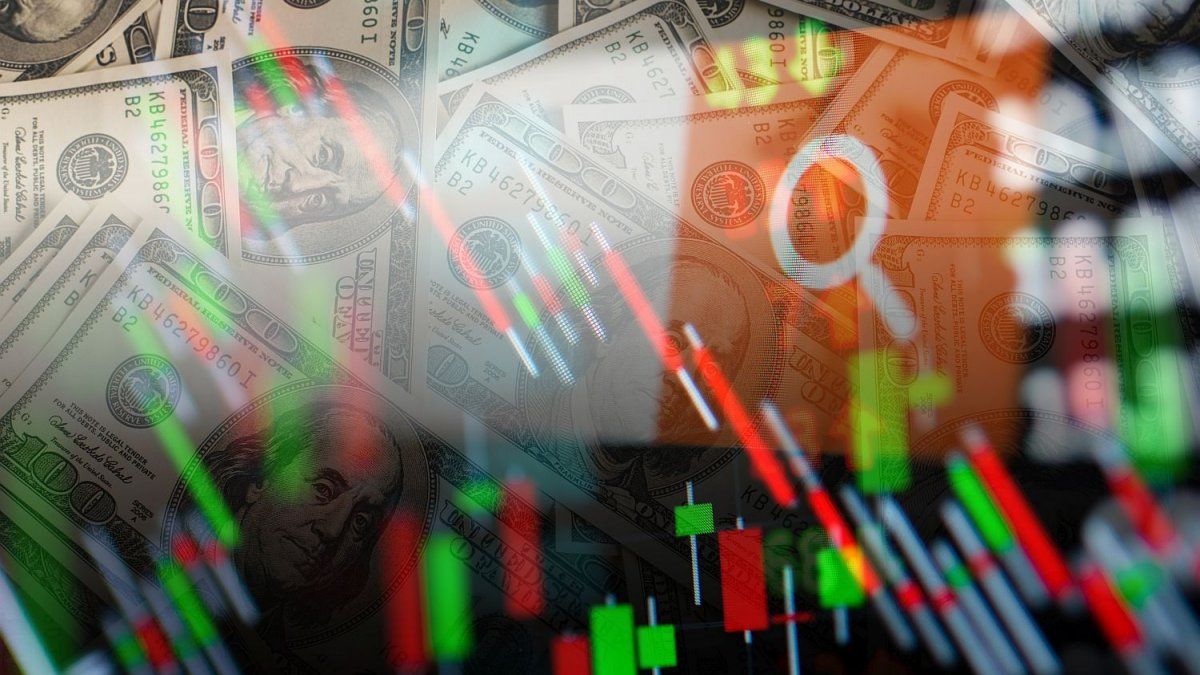At the tables you don’t hear talk about anything other than the dollar, the rate, the “gross” and that debt continues to accumulate with importers. How far will the BCRA go? It is the million-dollar question given the apparent flattening of the bill after the 400 basis point cut. But when asked how much further they can lower the rate, almost in unison the operators respond that they have almost no room for more, because there is a danger of deepening the negative level of real rates, which conspires against any hint of stabilization. If this were to happen, we already know what is coming: more encouragement for consumption and price increases. Conclusion: there is no room to go down until inflation seriously drops.
The Government’s toolbox only has, today, the clamp of liquefaction, there is no other, and they will tighten it even more to the extent that the structural reforms do not come about. They have no choice but to continue blending. What is clear to them is that with such a monetary squeeze, disinflation and a strong recession are on the horizon. And speaking of inflation, Already with the February data and the sayings of “Toto” that there is an overestimation of inflation because the INDEC considers the list prices that do not include the 2×1 promotions, a banker commented to him on an Amcham break, napkin in hand and pen , to another financier what the “great” economist Ernesto Gaba explained: it is necessary to distinguish between the price level “P” and the inflation rate defined by the variation of P between two time periods, that is, between “Pt” and “Pt”. -1″. If “Pl” is the list price and “Pv” is the true price and the discount rate is “d”, then Pv = dx Pl. In the event that “d” remains constant, the percentage variation of Pv will be equal to Pl and INDEC does not overestimate inflation by considering list prices. For this to occur, the discount rate would have to rise over time, but if the discount rate decreased it would be underestimating the inflation rate.
Therefore, for greater transparency it is necessary that all discounts be reflected in the list prices, but their existence does not necessarily imply overestimation of inflation. She left him thinking and “Toto” off-side. In another pleasant meeting, but with less public exposure than that of the US Chamber, a manager in clear growth brought down to earth the consequences of the latest BCRA measures to a group of clients. It anticipates a reduction in the surety rate, which was already operating in the 88%-89% area and surely, being a free rate that almost all market participants can access, unlike the Pass rate, it will operate below the monetary policy rate. He then suggested taking advantage of the few rates above the new scheme by buying the “TV24” bond and selling Rofex futures to April, which at the closing prices of these days showed a TNA of between 115% and 120% for 50 days, well above of the cost at which the bond would remain.
Wall Street funds and bankers are still very active roaming the region, especially Mexico, Brazil and Colombia, and some are calling clients to their Manhattan bunkers, as was the case with Bank of America (BofA) to evaluate the Argentine case. From the raids and road shows in the region, it was perceived that the appetite for taking risks in Latin America is limited while investors wait for the beginning of the monetary easing cycle in the US. From the meeting on Argentina this was gathered: the fiscal adjustment is impressive but the lack of political support is a risk. The energy sector will continue to be a key macroeconomic driver.
The regulation of public services improved but doubts persist about the complete tariff review. And speaking of funds and investments, the move was announced that, after two years of negotiations, ended in the merger of the Brazilian management company Vinci Partners with the American company Compass, giving rise to a key player in the region with assets under management for more than US$ s50,000 million and with global reach. Vinci will expand its geographic presence to eight countries, consolidating its position as a gateway to alternative asset management in Latin America, becoming an investment platform with strong capabilities to serve local, regional and global investors.
While Compass – founded in New York in 1995, a leader in the region with a presence in the US and the UK – will provide access to world-class managers and offer global and regional solutions to a new and broad client base, and a portfolio of US$37 billion under management. The transaction will have a total initial value of nearly $12 million in Vinci Class A common stock and more than $31 million in cash, in the form of redeemable Vinci Class C common stock. Goldman Sachs was the financial advisor. of Vinci and Morgan Stanley of Compass, the law firms Simpson Thacher & Bartlett, Carey, and Skadden, Arps, Slate, Meagher & Flom also advised.
In the meantime of so many regional visits, one of the now classic events in Latin America was held, the KicKOff 2024, organized by LATAM ConsultUs at the Enjoy hotel in Punta del Este where four of the six masterclasses were dedicated to analyzing investment opportunities in variable, fixed and alternative income in the region. According to the list of attendees, more than 450 executives participated, most of them financial advisors from Argentina, Uruguay and Chile and nearly 40 managers. Among those who spoke, William Nott of Ninety One American Franchise Fund stood out, who said that the market expects the Fed rates to begin to fall this year and how much and how quickly it is going to dictate the returns in equities in the short term; and that the great challenge is that much of the high-yield debt will have to be renegotiated in the coming years, at a rate that is no longer the historically low rate of 2020 and 2021.
For his part, Felipe Villarroel of Twenty Four Asset Management, a Vontobel boutique, said that the base case is a soft landing in which central banks reduce rates at a slow pace as inflation decreases and there is no major recession. . But the alternative scenario is that there is no landing and interest rates stay high for longer, putting pressure on government bonds that offer lower returns. Another well-listened to was Benjamín Trombley of Apollo, who proposed that investing in alternatives can generate competitive returns with listed stocks and help cushion the overall volatility of the portfolio.
But the one who dealt most with the region was Alfonso Duval of Moneda Asset Management who evaluated the opportunities that Latin America offers to invest this year. He said that equities in Latin America are the strongest performers as an asset class since 2022: the MSCI LatAm grew 25%, when the Nasdaq grew 3.1%, the S&P 500 barely 0.1% and the MSCI EM fell 16% .9% in that period. However, Latin America lost weight in the MSCI EM index since in the 2000s it was almost a third and today only 9%, which explains why there is a strong increase in the issuance of shares in Asia (the Chinese ones multiply by 5 the of Latin America) not because they give higher returns: in the last 30 years, the annualized return of the MSCI of China was 0.6%, while Brazil reached 9.5% and Mexico 6.6%.
Source: Ambito
I am a 24-year-old writer and journalist who has been working in the news industry for the past two years. I write primarily about market news, so if you’re looking for insights into what’s going on in the stock market or economic indicators, you’ve come to the right place. I also dabble in writing articles on lifestyle trends and pop culture news.




